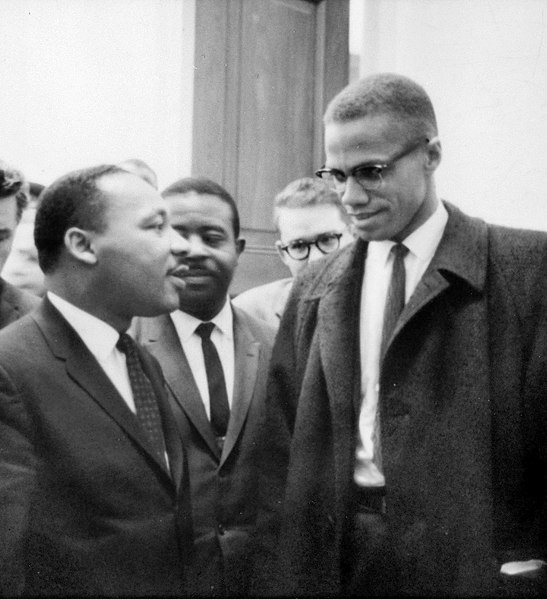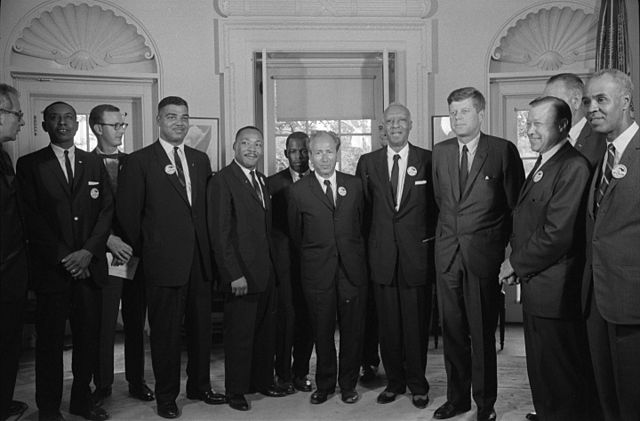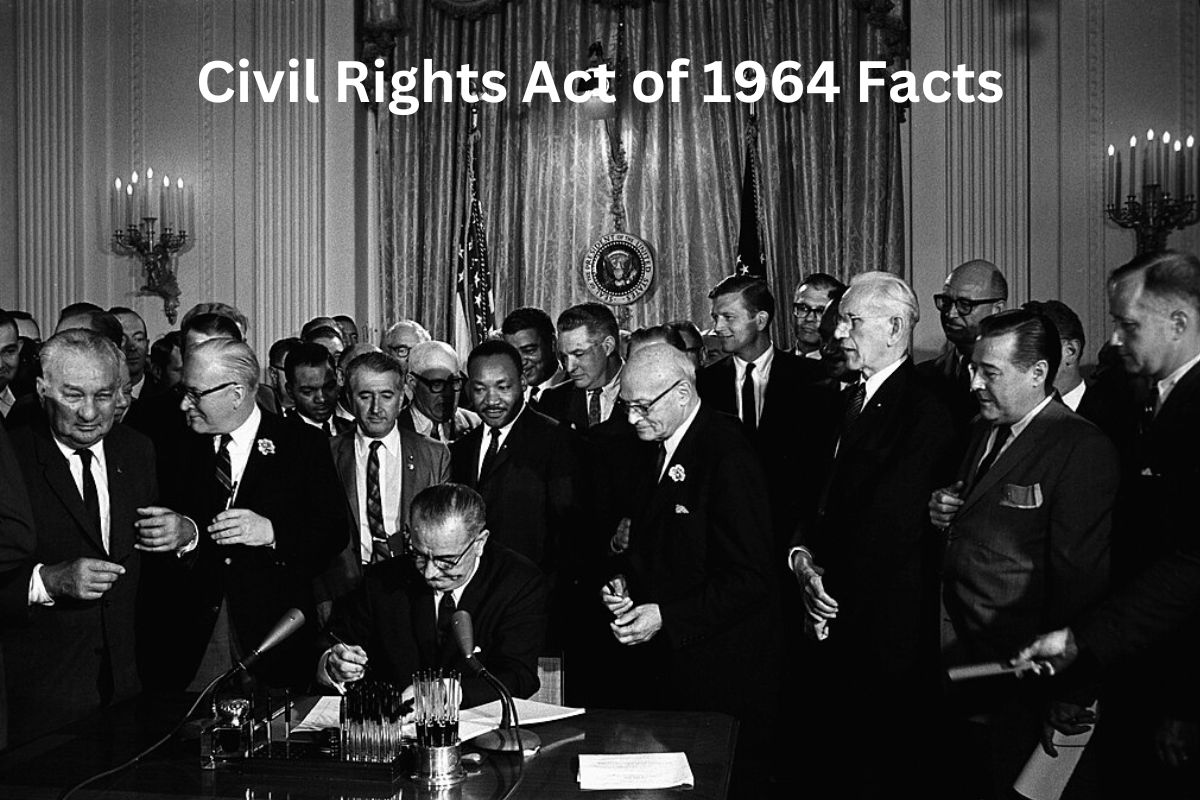The Civil Rights Act of 1964 is a landmark piece of legislation in the United States that holds immense historical and social significance.
Enacted during a pivotal period of the civil rights movement, the act aimed to address and eliminate racial discrimination and segregation that were deeply ingrained in American society.
By outlawing discrimination based on race, color, religion, sex, or national origin, the act sought to promote equality, justice, and the protection of civil rights for all Americans.
The passage of this act not only marked a turning point in the struggle for racial equality but also set a precedent for subsequent civil rights legislation and had a profound and lasting impact on the fabric of American society.
Facts About the Civil Rights Act of 1964
1. The Civil Rights Act of 1964 is a landmark federal law in the United States
The Civil Rights Act of 1964 is one of the most significant pieces of legislation in U.S. history. It was a response to the widespread racial discrimination and segregation that persisted in American society, particularly in the southern states.
Also Read: Facts About the March on Washington
The act aimed to address these issues by prohibiting discrimination based on race, color, religion, sex, or national origin.
2. It was signed into law by President Lyndon B. Johnson on July 2, 1964
President Lyndon B. Johnson signed the Civil Rights Act into law on July 2, 1964. The act had been in the works for several years, with proponents of civil rights pushing for comprehensive legislation that would tackle discrimination in various areas of public life.

3. The act was primarily a response to widespread racial discrimination and segregation in various aspects of American society
The Civil Rights Act of 1964 was primarily a response to widespread racial discrimination and segregation that existed in various aspects of American society.
African Americans faced systemic discrimination and were denied equal access to public facilities, education, employment opportunities, and voting rights.
Also Read: Voting Rights Act of 1965 Facts
The act’s provisions sought to dismantle the legal framework of segregation and discrimination that was deeply entrenched in many states, particularly in the southern region of the United States.
By doing so, it aimed to ensure that all individuals, regardless of their race or ethnicity, could enjoy equal rights and opportunities under the law.
4. It prohibited discrimination in public accommodations, such as hotels, restaurants, and theaters
One of the key provisions of the act was the prohibition of racial discrimination in public accommodations. Prior to the act, many establishments, such as hotels, restaurants, and theaters, could legally refuse service to individuals based on their race.
The act made it illegal to deny services or access to these establishments on the basis of race, ensuring equal treatment for all.
5. The act also banned racial segregation in public schools, colleges, and other educational institutions
Another important aspect of the Civil Rights Act was its impact on education. The act aimed to eliminate racial segregation in schools, colleges, and other educational institutions.
Also Read: Famous Civil Rights Leaders
It required the desegregation of these institutions, which had been a contentious issue in the southern states where segregated schools were prevalent.

6. It established the Equal Employment Opportunity Commission (EEOC)
To enforce the provisions of the act and address issues of discrimination in employment, the act established the Equal Employment Opportunity Commission (EEOC).
The EEOC is a federal agency tasked with investigating and resolving complaints of workplace discrimination based on race, color, religion, sex, or national origin.
The creation of the EEOC provided a framework for individuals to seek legal remedies for discrimination in the workplace and promoted equal employment opportunities for all Americans.
7. The act prohibited employers from discriminating against employees or job applicants
The establishment of the Equal Employment Opportunity Commission (EEOC) through the Civil Rights Act of 1964 marked a significant step forward in combating employment discrimination.
The EEOC is responsible for enforcing Title VII of the act, which specifically addresses discrimination in the workplace. It investigates complaints, facilitates conciliation between parties, and pursues legal action against employers engaged in discriminatory practices.
8. Title VII of the act specifically addressed employment discrimination and provided legal remedies
Title VII of the Civil Rights Act of 1964 prohibits employers from discriminating against individuals based on their race, color, religion, sex, or national origin. It applies to both hiring practices and conditions of employment, including promotions, wages, and termination.
This provision has played a crucial role in promoting equal opportunities for marginalized groups and ensuring fairness in the workplace.
The act recognized the importance of providing legal remedies for individuals who faced discrimination in the workplace. If someone believes they have been subjected to employment discrimination, they can file a complaint with the EEOC, which will investigate the claim and attempt to resolve it.
If a resolution cannot be reached, the EEOC may file a lawsuit on behalf of the individual or issue a “right-to-sue” letter, allowing the person to pursue their case independently in court.
9. It expanded the federal government’s authority to enforce voting rights
In addition to addressing discrimination in public accommodations and employment, the Civil Rights Act of 1964 sought to protect and expand voting rights.
It provided provisions to ensure that discriminatory practices, such as literacy tests and poll taxes, could not hinder African Americans’ right to vote.
The act empowered federal authorities to oversee voter registration and conduct investigations into voting practices to enforce fair and equal access to the voting process.
10. The act also provided for the withholding of federal funds from programs and institutions engaging in discriminatory practices
The Civil Rights Act authorized the withholding of federal funds from programs and institutions that engaged in discriminatory practices.
This provision provided a powerful incentive for compliance with the act and helped ensure that federal dollars were not used to support discriminatory actions.
By linking funding to non-discriminatory practices, the act exerted pressure on states, local governments, and institutions to adhere to the principles of equal rights and non-discrimination.
11. It marked a significant turning point in the civil rights movement
The Civil Rights Act of 1964 marked a significant turning point in the civil rights movement and the broader struggle for racial equality in the United States.
It represented a major legislative victory for civil rights activists and advocates who had long fought against racial discrimination and segregation.
The act’s passage demonstrated a shift in public opinion and political will to address systemic inequalities and promote equality for all Americans.
12. The act faced significant opposition from segregationist politicians and interest groups
However, the Civil Rights Act faced significant opposition, particularly from segregationist politicians and interest groups primarily based in the southern states.
The legislation encountered a lengthy filibuster in the Senate, led by opponents who sought to maintain the status quo of racial segregation and discrimination.
Ultimately, proponents of the act were able to gather enough support to overcome these obstacles and secure its passage.
13. It was influenced by the growing civil rights movement and the activism of individuals and organizations advocating for equal rights
The Civil Rights Act of 1964 was heavily influenced by the growing civil rights movement of the time. Activists such as Martin Luther King Jr., Rosa Parks, and numerous grassroots organizations played a crucial role in advocating for equal rights and mobilizing public support for the legislation.
Their nonviolent protests, demonstrations, and acts of civil disobedience drew attention to the injustices of segregation and discrimination, creating a powerful momentum for change.
14. The Civil Rights Act of 1964 had a profound impact on American society
The passage of the Civil Rights Act of 1964 had far-reaching implications beyond its immediate impact. It paved the way for subsequent civil rights legislation, including the Voting Rights Act of 1965, which further strengthened voting protections and addressed discriminatory practices.
The act also influenced the passage of the Fair Housing Act of 1968, which prohibited housing discrimination based on race, color, religion, sex, or national origin.
15. The act is widely regarded as one of the most important pieces of legislation in U.S. history
The act is widely regarded as one of the most important pieces of legislation in U.S. history. Its impact on American society cannot be overstated.
By outlawing racial segregation and discrimination, the act significantly improved the lives of millions of individuals and helped to dismantle the legal barriers that perpetuated systemic inequality.
It set a precedent for the protection of civil rights and the promotion of equality, shaping the trajectory of social justice movements in the years that followed. The Civil Rights Act of 1964 continues to serve as a symbol of progress and a reminder of the ongoing work needed to ensure equal rights for all individuals.
